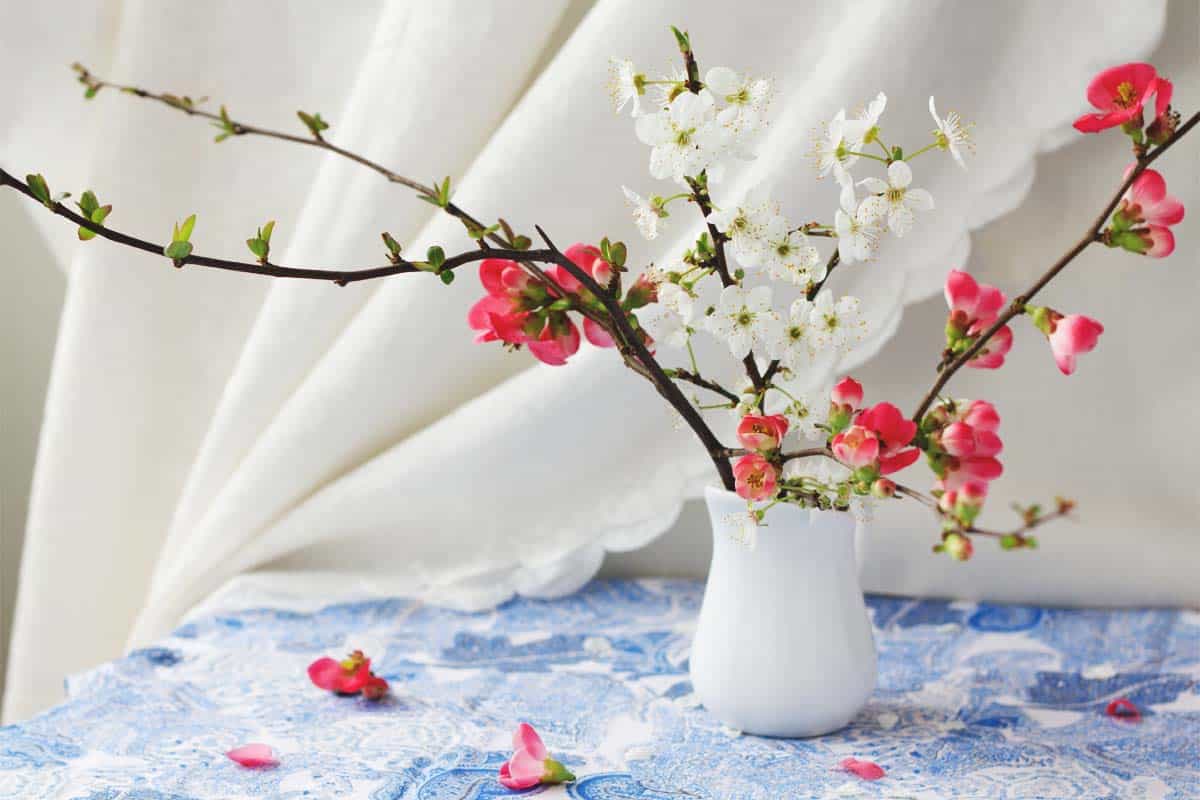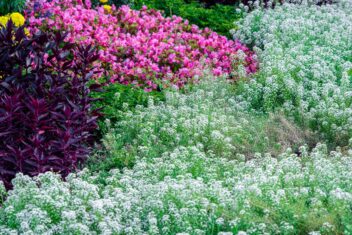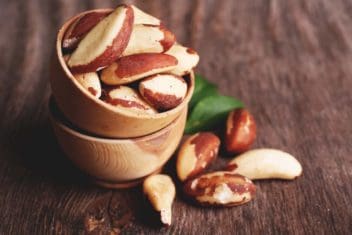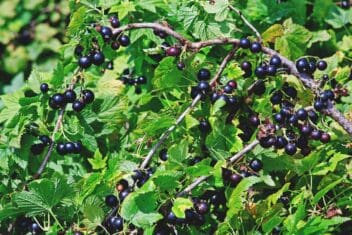Come late winter, most of us are intensely longing for spring. As you chomp at the bit waiting to plant seeds, there’s something you can do to bring spring into your home: forcing flowering branches.
Forcing flowering branches is a timeless tradition that brings fresh spring aromas and beautiful blooms into the house. It’s also a smart way to use up pruned branches.
The process is incredibly simple. You just cut some branches from your flowering tree or bush and treat them similar to cut flowers. Keep reading for a list of trees and bushes that work well and how to get it done.
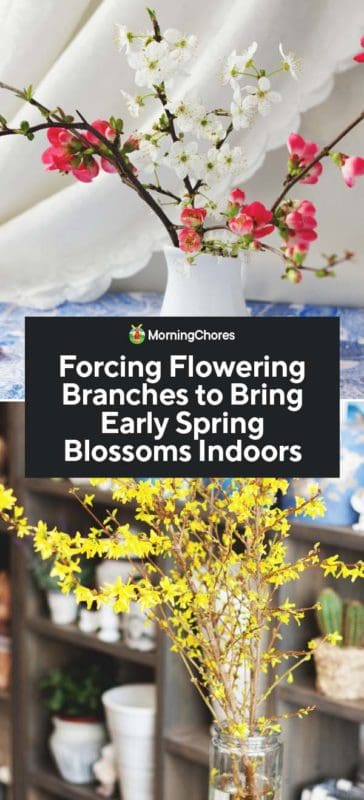
Get Ready
Typically you should collect branches in February or March, although depending on your agricultural zone, you may start as early as January. Just make sure your trees and bushes have had at least six weeks of chilling under 40°F.
This chilling period is important because without it the plants still think it’s fall and won’t open their flower buds. It’s best not to cut branches before January 15th.
Plants vary on when they bloom and it can depend on the weather you’ve had. Some trees may already have buds that are swelling and are ready to blossom in your home. Others may take a while.
Some branches have both leaf buds and flower buds. Make sure you know which one is the flower buds. If you are unsure you can always cut open a bud to see either flower or leaf parts.
Typically, flower buds are larger and rounder in shape. They often appear on the previous year’s growth.
It takes two to four weeks for the branches to develop flowers.
Steps to Forcing Branches
- First, select the branches to cut. Focus on ones that you’d prune, like those that are crossing over others or growing too thickly in the middle. Choose a branch that is at least 12 inches long and has lots of buds starting to appear.
- Cut at the base of the stem on a diagonal. Make your cut at the top of the branch collar, which is the widened area of the branch where it joins a larger branch or the trunk.
- Arrange the branches in a large vase or vessel of warm water. You can use a flower preservative if you want. Check out our suggestions for a homemade recipe below.
- Put your vase in a sunny, cool spot, preferable away from a heat source. Mist them daily as the moisture helps the buds to swell and also combats the dryness of your heated home. Bright but indirect light is best.
- To prevent bacteria from forming and causing disease, change the water every few days.
- When the blooms appear you can move them and display on a table or other welcoming spot. Continue to change the water so that you get a longer bloom period.
Tips
Cut branches when the temperature is above freezing. You don’t want to shock your plants by taking them from a frigid to a warm environment.
Use a clean, sharp pair of pruning shears to cut your branches. You can do some general pruning at this time as well. Cut out dead branches or those growing at a weird angle. Remember the purpose is to shape your bush and provide good air circulation.
Use good pruning techniques. You want to cut branches on the diagonal which gives a greater surface area and ensures water uptake. Some people take a hammer and slightly crush the ends a bit to encourage the plant to soak up moisture.
You never want to take more than 1/4th of the branches on the plant when pruning. For forcing flowering branches, you only need 8-10 branches to make a nice showing. Leave plenty of good branches on the bush so that you have a beautiful display when spring comes.
Best Bushes and Trees For Forcing
Some trees and bushes set buds in the fall or even in warm spells during the winter. These respond well to coming indoors and opening in the warmth of your home. You are looking for trees and bushes that flower first, before producing leaves.
Keep in mind that you can do a mixed variety of forced flowering branches or stick with one variety.
Forsythia

Forsythia is a classic bush to force. It’s naturally an early bloomer and only takes sone to two weeks to bloom in the home. This pretty plant produces lots of distinct, bright yellow flowers.
Witch Hazel
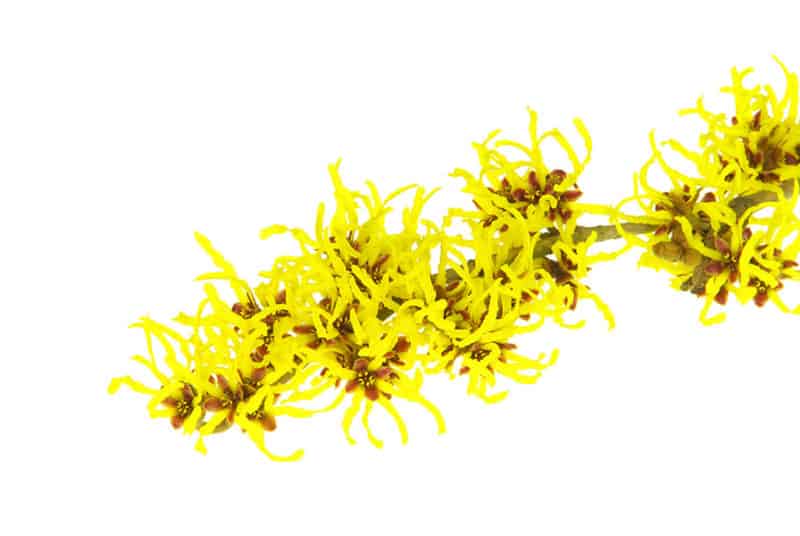
Witch hazel is a unique flowering bush option because it blossoms in winter without being forced. All you have to do is cut some branches and bring them inside.
Magnolia
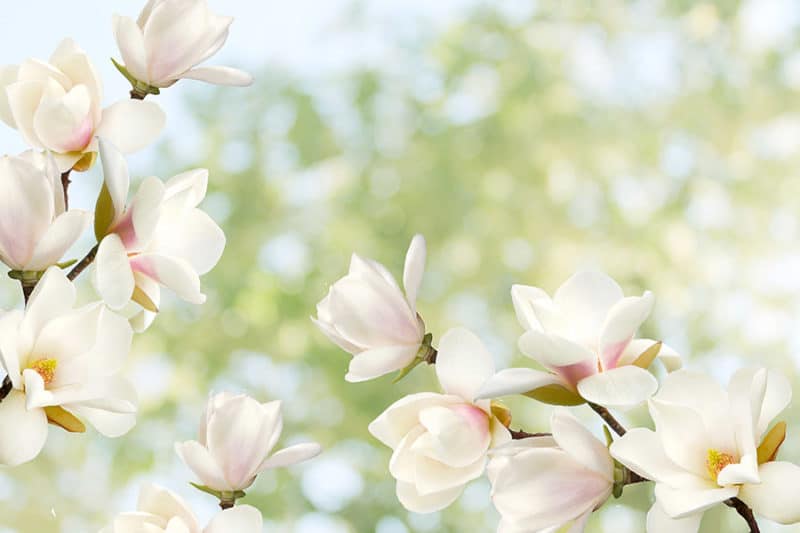
I love magnolias and I wish I could have them blooming all year. All magnolia varieties work well for forcing. The star magnolia is an especially fun one because the white flowers look like twinkling stars. Other species look like soft white cups.
Red Bud
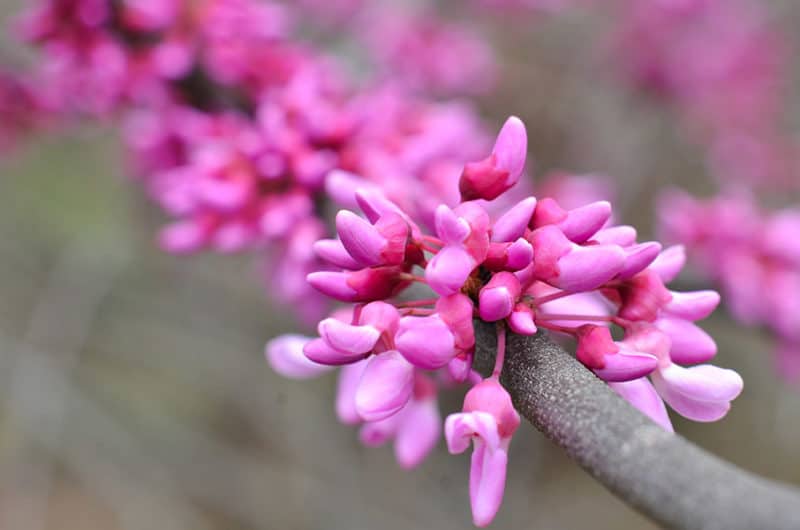
You know spring is happening when you drive down the road and see all the pretty pink redbud blossoms. Bringing them inside gives you a head start on enjoying their beauty.
Pussy Willow

Pussy willows are a fun option that give you fuzzy, soft, white buds rather than actual blossoms. The branches force quickly in only one to two weeks.
Apple
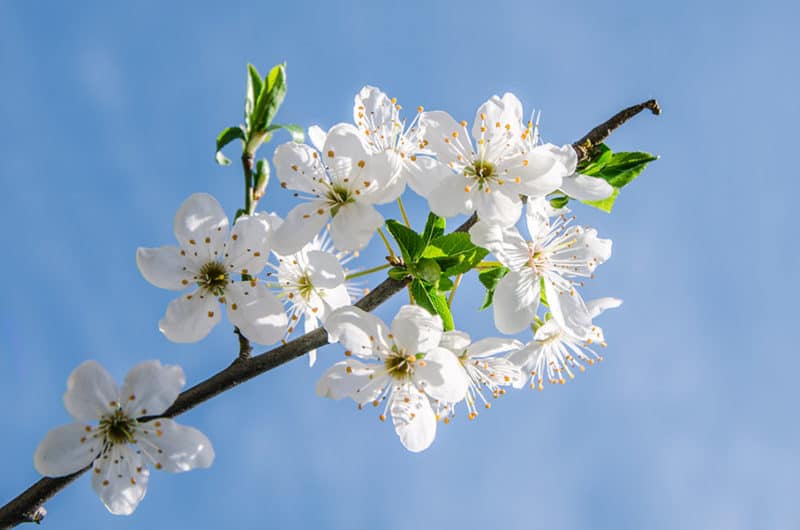
Both the crab apple and the traditional apple are ideal for force flowering branches. They’ll fill your home with their delightful fragrance. Some varieties have double blossoms and these take longer to force.
Flowering Quince
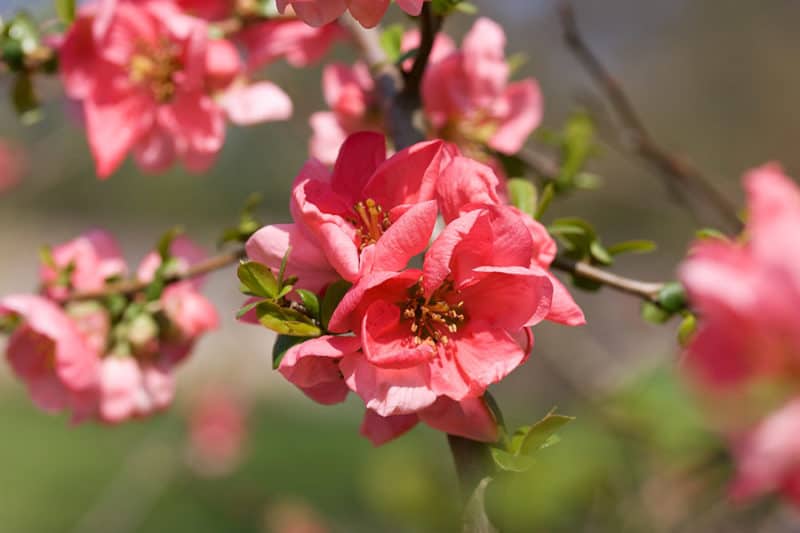
Flowering quince has long-lasting, red or orange flowers. It takes four weeks to force, so hang in there. The results are worth it.
Cherry
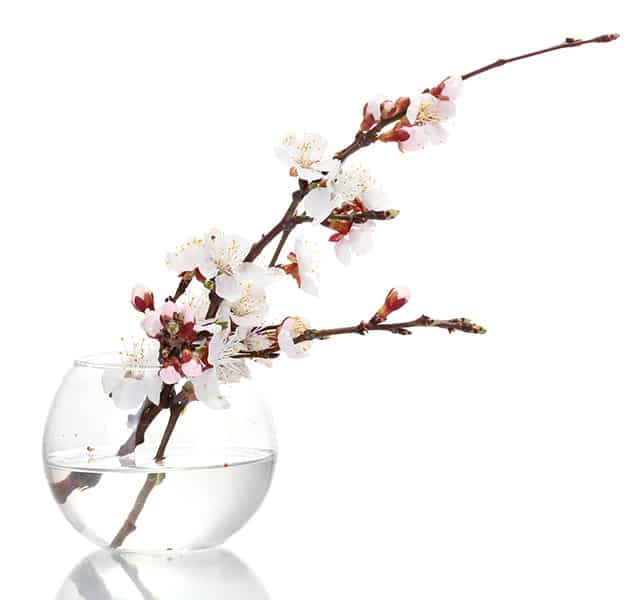
You can force both fruit cherries and flowering cherries. Cherries are naturally a later bloomer and can take four weeks to bloom in the home. Be sure to mist them daily so they don’t dry out. The ornamental flowering cherries are a bit easier to force.
Lilacs
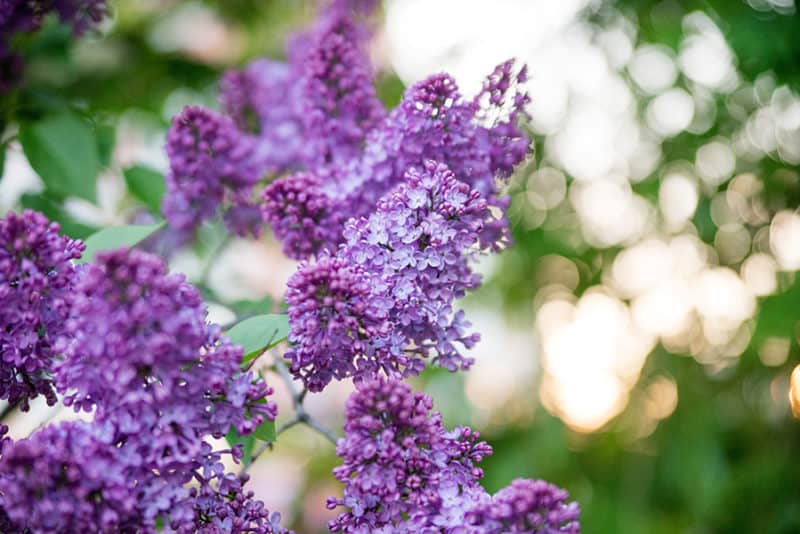
Lilacs are large, rambling bushes with intensely fragrant clustering blooms in purple, white and pink. They need four weeks to force.
Serviceberry
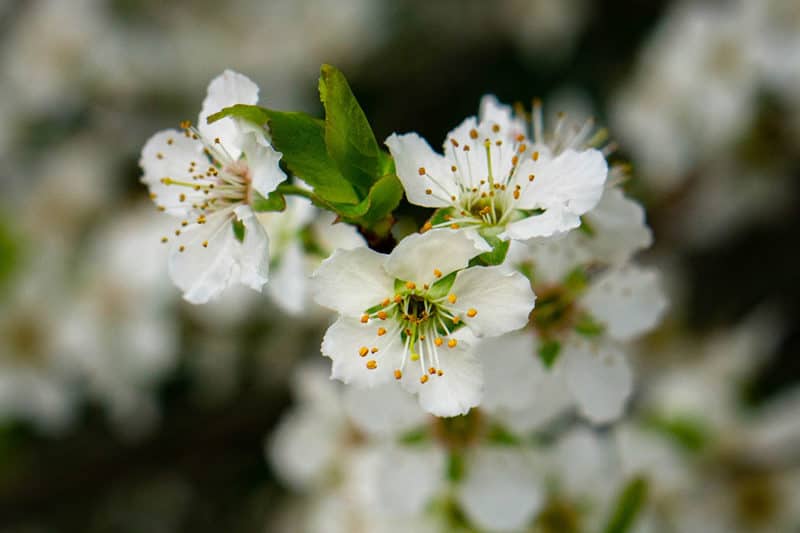
Another easy forcer, serviceberry takes one to three weeks to burst forth with dainty white flowers.
Beauty Bush
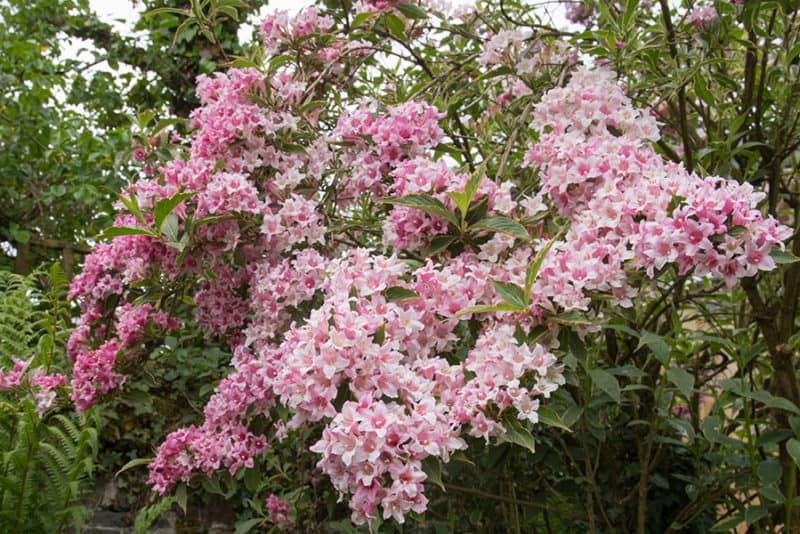
Beauty bush has small clusters of pink flowers. It takes approximately three weeks to blossom in the home.
Honeysuckle
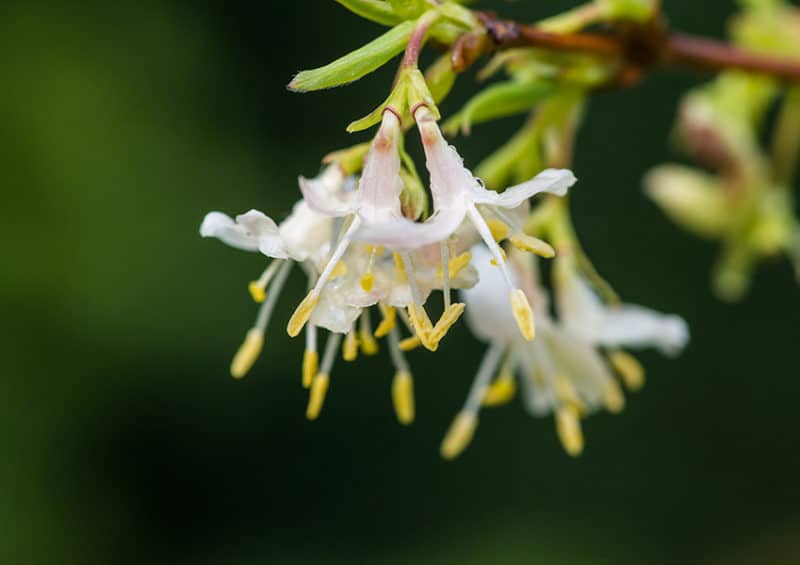
I have a love/hate relationship with honeysuckle. They’re an aggressive, invasive species in the garden – but they smell so good and my bees love them. Honeysuckle forces easily in a couple of weeks and has fragrant pink, salmon, yellow or white flowers.
Spicebush

Spicebush has fragrant pinkish-white flowers. It’s quick to force.
Rhododendrons and Azaleas
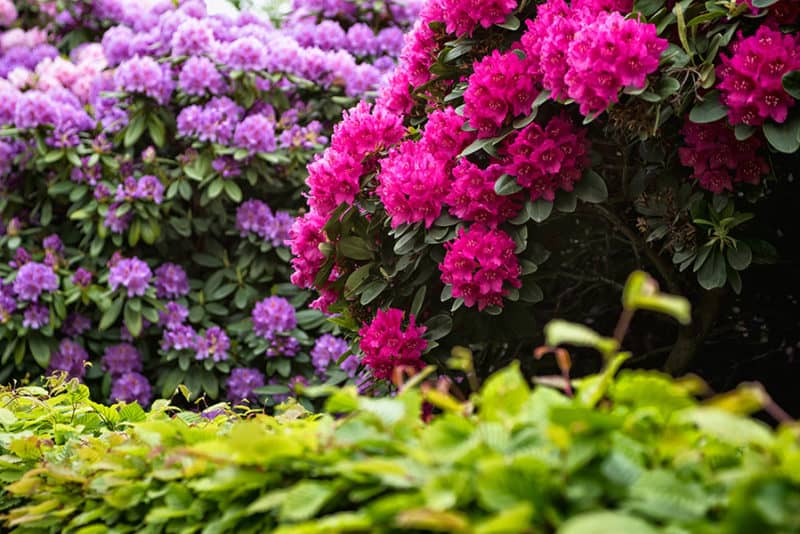
Rhododendrons and azaleas are lumped together because they’re so similar. Watch your bushes for bud swell because these two can be tricky when it comes to timing. Harvest branches late February or March when the buds are just ready to erupt. The plants come in many colors and take four to six weeks to force.
Weeping Willow
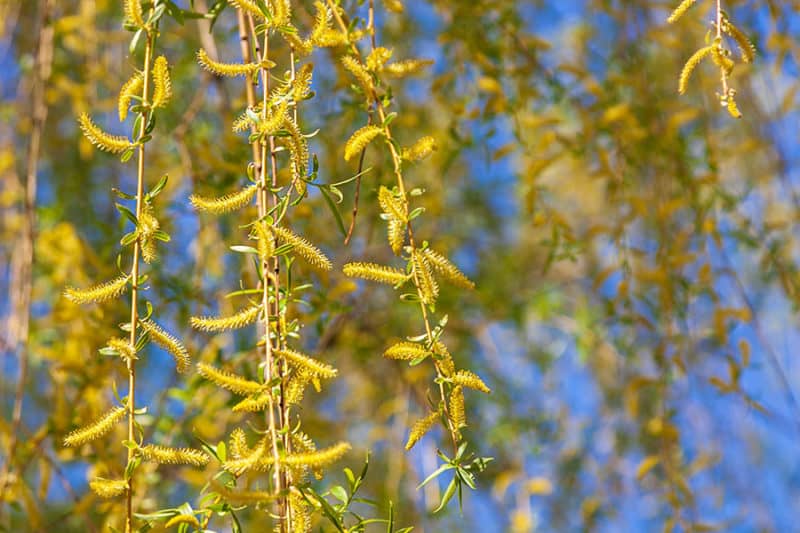
Weeping willows produce drooping, fuzzy growths known as catkins. The branches take about three weeks to force.
Rooting
Sometimes rooting may occur on your forced flowering branches because they have been in warm water for a long time. This is an exciting opportunity for you to propagate a new bush.
If you want to develop a new plant, simply remove the branch from the water after the roots reach 1/4 – 1 inch long. Next, pot the branch individually in potting soil.
Keep the soil moist but not wet until permanent roots have formed. You may need to give it some support at this stage.
After the last frost and the weather has warmed, you can plant outside. Your bush is tender the first year and should have protection while it establishes itself. Make sure to keep it moist and fertilize monthly.
Homemade Flower Preservative
You may want to add a homemade flower preservative to your forced branches. Like cut flowers, the branches last longer if you add a preservative. It is also important to change the water every few days.
Combine:
- 1 tsp sugar
- .5 tsp bleach
- 1 tsp lemon or lime juice
- 1 quart lukewarm water
Why does this mixture work? The sugar provides carbohydrates that feed the plant. Bleach fights bacterial growth and the lemon or lime juice acidifies the water and adjusts the pH.
Experts recommend using warm water because they say it helps the stems drink better.
Take Away
Forcing flowering branches is near and dear to my heart. My mother used to gather pussy willow and forsythia branches to force. They looked so pretty together that now I do the same thing.
I’m always desperate for spring and planting season. I long for splashes of color and forcing branches gives me that fix.
